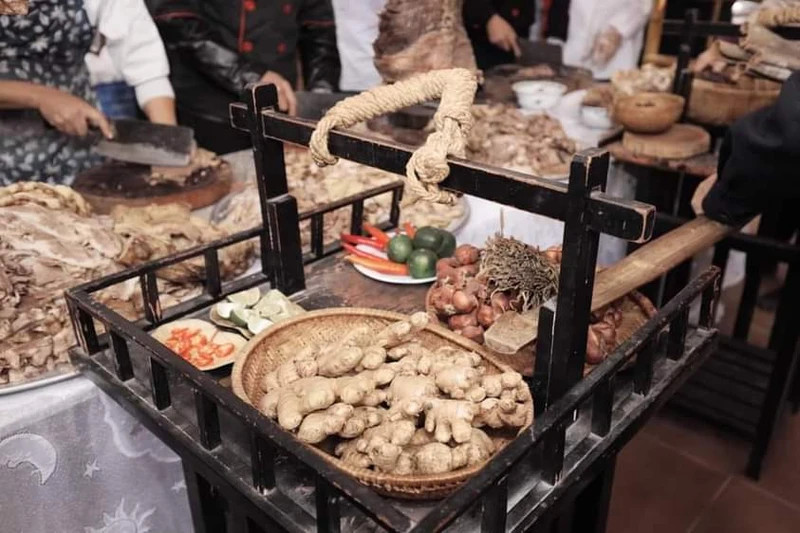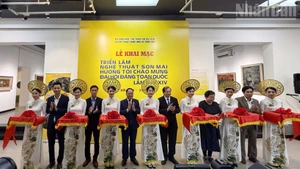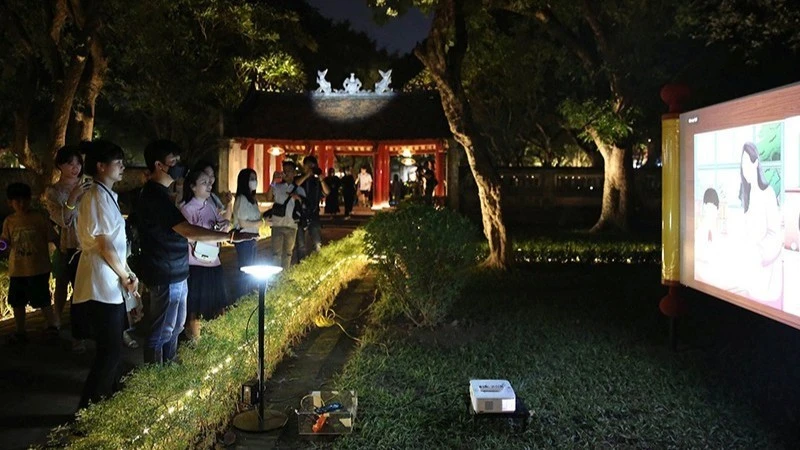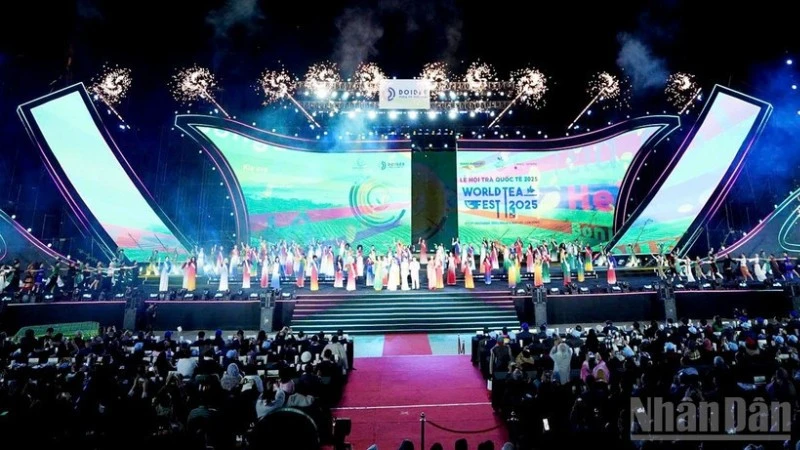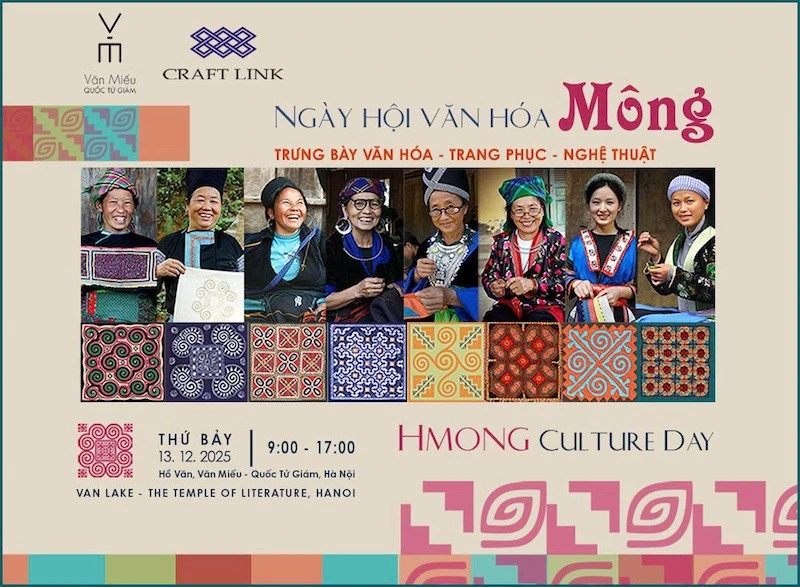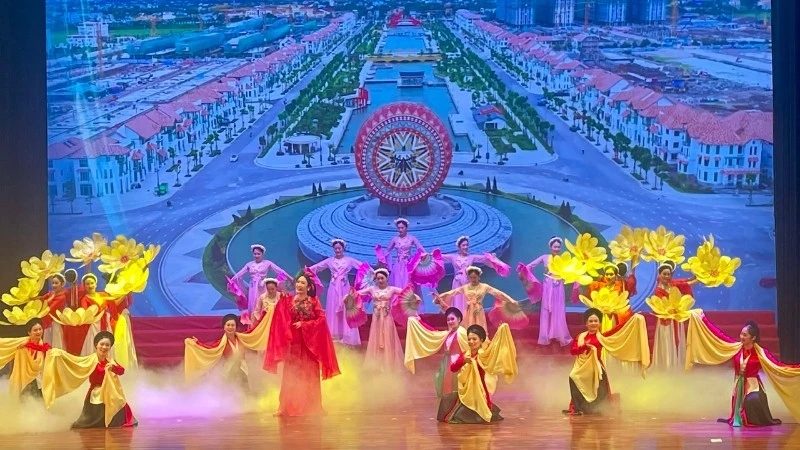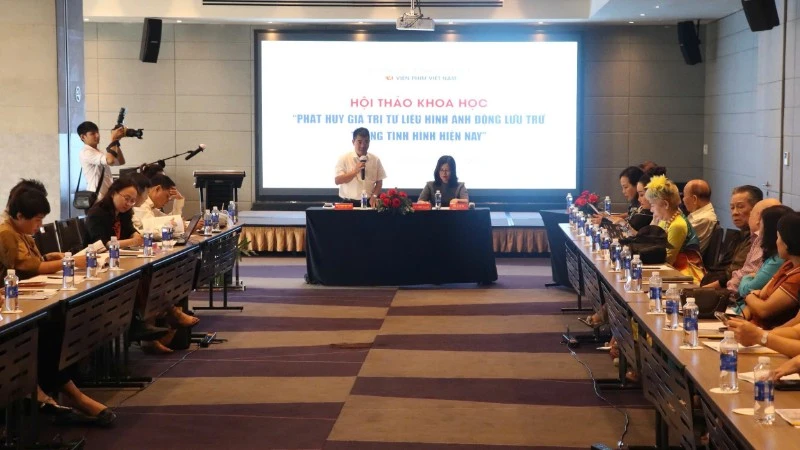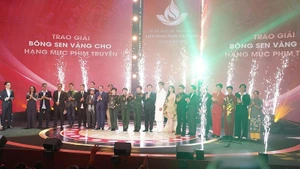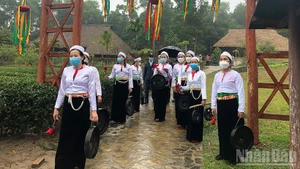According to the Organising Committee of the 2024 Pho Festival, the 300-litre ‘pho’ broth is simmered from bones and spice powder with ingredients including an estimated 40kg of rare and cooked beef and 20kg of vegetables, chili, and spices rich in Vietnamese flavour such as fish sauce, salt, and herbs (dried cinnamon, cardamom, star anise, cloves, coriander seeds, etc.).
At the ceremony to recognise the giant ‘pho’ pot, guests will listen to senior artisans tell stories about ancient ‘pho’, observe how to make noodles, and enjoy typical varieties of noodles from the three regions. Notably, 1,000 bowls of 'pho' will be served to guests, counsellors, and visitors attending the programme.
According to artisan Le Thi Thiet, Chairwoman of Nam Dinh Provincial Culinary Culture Association and a representative of the 2024 ‘Pho’ Festival, the preparations for the event have been gradually completing.
“Currently 20 artisans and chefs are simmering bones and will start preparing meat tomorrow. Tomorrow, chefs from Van Cu Village will focus on making the noodles,” said Thiet.
Artisans from chef associations and artisan groups will work with local chefs to cook the giant pot, from choosing spices and safe ingredients to creating an aesthetic appearance for the bowls of ‘pho’.
Through the preparations for the pot of ‘pho’ both, the organisers also want to honour traditional Vietnamese spices.
According to the artisan, the unique feature of the 2024 Pho Festival is the positioning of aromas and spices in Vietnamese ‘pho’. Currently, many countries such as Japan and the Republic of Korea also cook Vietnamese ‘pho’, however they cannot determine the standard spices in cooking ‘pho’.
"Vietnamese ‘pho’ is characterised by salt, fish sauce, and herbal spices to balance the nutrition of ‘pho’. We developed the programme entitled ‘The Road of Pho’ to introduce domestic and foreign tourists to the typical spices of Vietnam," artisan Le Thi Thiet added.
In addition to using beef bones and beef to create delicious bowls of ‘pho’, Vietnamese ‘pho’ also has its own unique characteristics. "The rice grains for making noodles have their own characteristics, such as dry rice grains that are not soft enough to make the noodles sticky. This is the secret that Vietnamese people are still keeping,” Thiet said.
At the 2024 Pho Festival, artisans from the central region will introduce noodles made from banana flour from the A Luoi region and lotus powder. Da Lat introduces artichoke-made noodles. Meanwhile, the southern artisans bring ‘Pho 2 to’ (two-bowl Pho), Panax Vietnamensis ‘pho’ and cassava flour ‘pho’.
On the occasion, the Nam Dinh Provincial Culinary Culture Association will also officially grant certifications to 45 members in the villages of Van Cu, Nam Truc, and Nam Dinh for using the brand of ‘Pho’ Co nationwide.
